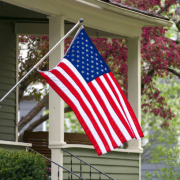Energy Myths – Windpower Spins Up
written by Kansas City Regional Clean Cities Coalition director David Albrecht
Like many technologies, the windmill is nothing new. People have been using the wind to grind grain and pump water for over a thousand years. If not for the windmill, there’d be no Netherlands as we know it. Settling America’s plains states during the 19th Century would have been nearly impossible. But the use of wind to generate electricity at scale is new, going back only about 30 years. In that short time, this evolving technology has produced the biggest single leap in renewable electricity output since the Age of Dams in the early-to-mid 20th Century.
In theory, generating electricity from wind is simple. Air moves over the turbine blades, generating lift and setting the system in motion. The shaft on which the blades are mounted rotates. In doing so, it spins a magnet inside the generator’s windings, producing electricity. Turbines can be direct-drive systems, but most use gearboxes to speed up their blades, since higher RPMs generate more efficiently. The electricity produced by the turbines hits the grid and powers everything from toasters to cities. Simple, no?
The Where Of American Windpower
Well, not quite. There are more than a few complications. Wind is generated by the sun’s heating of Earth’s surface, which is uneven. Geography, climate and terrain add more variability. Result – the wind blows reliably only in certain regions. In America that means the Midwest , especially the Great Plains. That’s why Texas leads the country in wind energy capacity, with Iowa, Oklahoma, California (outlier!) and Kansas in spots two through five. And that’s why eight contiguous states in the southeast to date have zero installed capacity.
Onshore, the strongest winds blow in thinly populated states far from power-hungry big cities. Transmission lines can cost millions of dollars per mile, and they’re not always popular, locally or politically. And as the seasons change, so does the wind. On the High Plains, America’s wind power sweet spot, output falls during the hottest months, when electrical demand for cooling spikes, rising again during winter.
Upsides – Income & Jobs
However, there are multiple benefits to wind. Unlike coal or uranium, the wind is free. Building turbines means leasing land. Those leases bring in between $5,000 and $8,000 per unit per year to farmers or ranchers, though they can also limit construction and access by landowners. Turbine maintenance means turbine techs. More than 7,000 Americans are already working in this fast-growing sector, with median pay of nearly $53,000 per year.
Efficiency keeps improving. In much of America, the higher off the ground, the stronger the wind. Taller turbines are taking advantage of that fact. Between 2000 and 2018, average turbine height jumped nearly 100 feet, with bigger units providing more power. And the environmental benefits of wind energy are substantial. Beyond the carbon embedded in building and installing the systems, electricity from wind is carbon-free. As markets for clean energy credits grow, and clean energy demand grows, so does the financial case for wind.
Rapid Growth And What’s Next
For all these reasons and more, wind’s growth has been simply explosive. In 1990, wind provided 3 billion kWh, or about 0.1% of all electricity. 10 years later, it had doubled, and was still stuck at about 0.1% of the market. Total share in following years: 2005 – 0.4%; 2010 – 2.3%; 2015 – 4.7%; 2019 – 7.3% – the same year that wind overtook hydropower.
But this intermittent (though clean) energy source has limits. Surpassing those limits means going to sea. That’s because offshore wind potential in the United States is about twice the nation’s current electricity demand. But offshore wind power is almost non-existent here, with exactly one site currently up and operating. Beyond that, grid upgrades and the addition of large-scale energy storage are going to be necessary for wind energy to make its next big jump.


